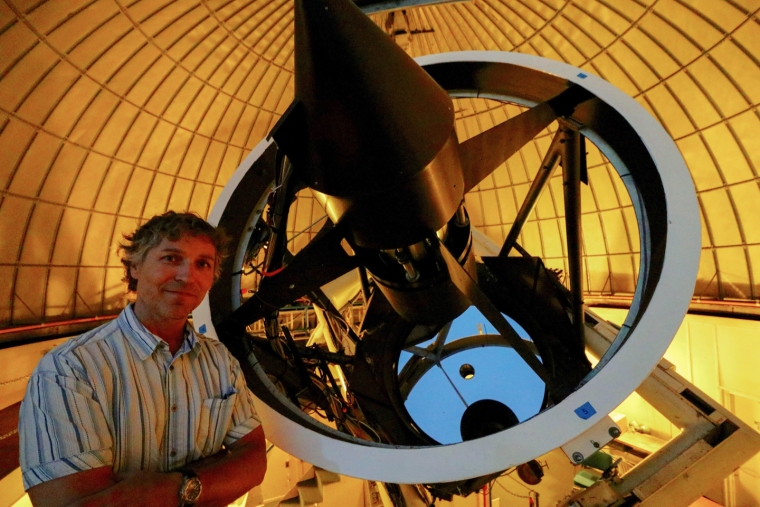Catalina Sky Survey Tops off 2021 with a Rare Bright Comet Discovery
Catalina Sky Survey Tops off 2021 with a Rare Bright Comet Discovery

At the time of discovery, the comet was 400,000 times dimmer than what the human eye can see and was detected as a fuzzy patch of pixels tracking across the background stars in four telescope images. In the past, comets were discovered visually by very dedicated astronomers who spent countless hours scanning the night skies with a telescope. In recent decades, most comets are discovered incidentally by surveys tasked with finding near-Earth asteroids like the NASA-funded Catalina Sky Survey (CSS), Pan-STARRS, ATLAS and NEOWISE projects.
Most long-period comets such as Comet Leonard hail from the Oort Cloud, a vast region surrounding our solar system at distances no spacecraft has ever come close to, not even the two Voyager probes, which have officially left the solar system and entered interstellar space. Out there, suspended in the vast interstellar void where temperatures are close to absolute zero, are billions of orbiting comets balanced in a delicate tug-of-war of extremely weak gravitational forces between the distant sun and the rest of the Milky Way. Slight perturbations of this precarious balance of forces may nudge a chunk of ice and dust out of the Oort Cloud and send it onto a trajectory toward the Sun.
Comets are small bodies of the Solar System which are largely comprised of different types of ices and dust. Most comets have undergone very little processing since the beginning of the Solar System since they spend most of their lifetime at large heliocentric distances in the most frigid regions of space. Cometary nuclei therefore contain pristine samples of grains and gas from the protosolar nebula in which they formed; thus studying comets allows us to peek into the early conditions of our Solar System’s formation.
The most abundant ice and contributor to cometary activity through sublimation is water-ice, but C/2021 A1 (Leonard) was observed to be active beyond the water-ice sublimation zone. This means that other mechanisms different from water-ice sublimation were responsible for the activity, possibly through the sublimation of other icy compounds such as carbon monoxide, carbon dioxide, or different exothermic mechanisms.
Comet Leonard made its closest approach to Earth on Dec. 12, at which point it was still more than 21 million miles away. "This is the last time we are going to see the comet," Leonard says. "It's speeding along at escape velocity, 44 miles per second. After its slingshot around the Sun, it will be ejected from our solar system, and it may stumble into another star system millions of years from now."
Read more:

